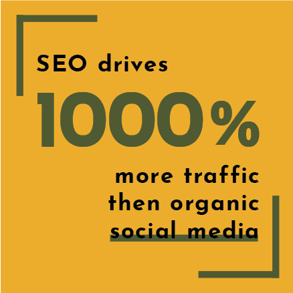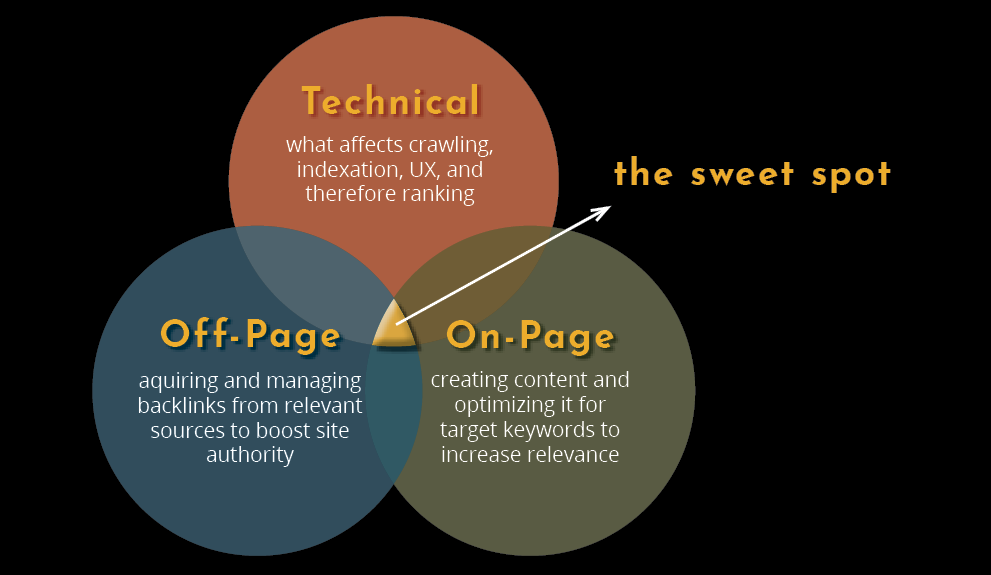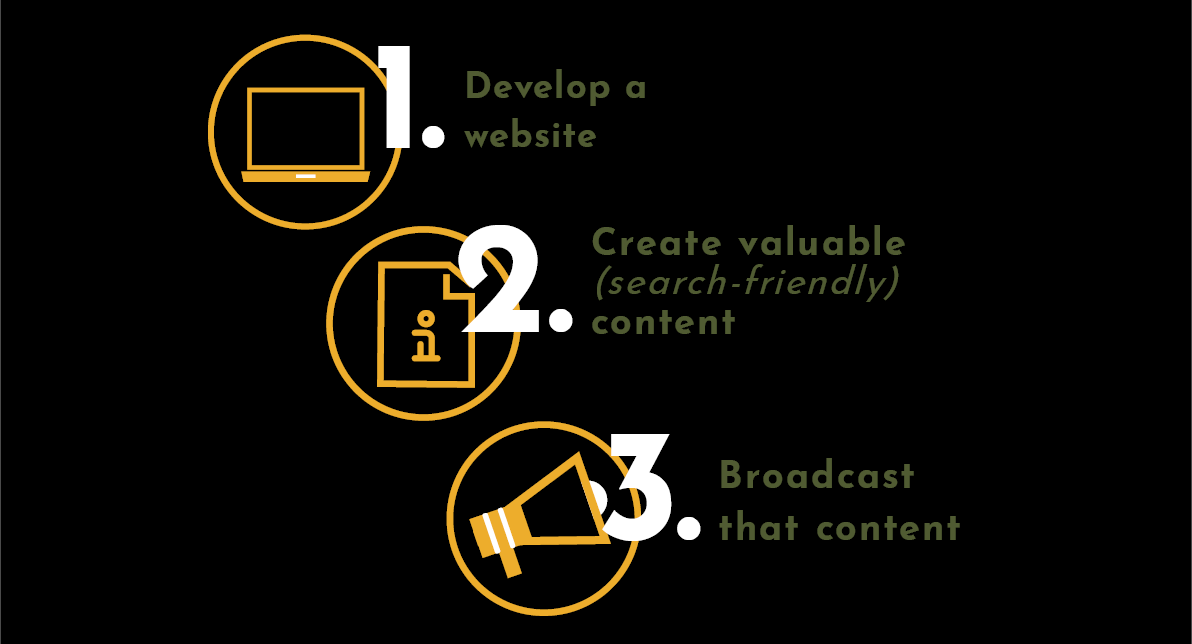The term SEO has been around for a long time, but still makes for questioning faces when it is used without further explanation. Everyone has heard about it’s importance but also complexity. Consumers are still “googeling” on their smartphones and computers several times a day, so search remains a reliable marketing channel. Therefore, we are going to explain the main terms used along with SEO and actions to take to improve it. This blog post will dispel the mystery search engine that makes it seem like you have to be super tech savvy to use Google to your advantage. Spoiler: you don’t.
If you want to take a further step back to start from the very basics, we recommend reading Why do I need SEO services? first.
Optimising your Website
The easiest way to learn how SEO works, is to just do it. Take your website and follow some best practices, case studies or experts, just make sure it fits your specific industry or niche. That said, the next advice is: don’t trust every source you find online. There are multiple bloggers that promote how they have found THE way to trick Google. But SEO is not about tricking Google, you want to work with Google. No one but Google will ever exactly know how the algorithm works. Nevertheless, some industry experts have done a lot of testing, so following their lead will save you time (and money). To start your SEO journey we recommend following Google’s official advice, as that is definitely not wrong or misleading. After reading this, you will have a lot of information, but probably still wonder: “How do I actually DO SEO?” – That’s where we come into place. We are not going to add an itinerary of literature to read or videos to watch to your already busy workday. We have done the research and testing for you.
The main steps to follow to optimize your website are:
Technical Side
 Let’s start with what you should consider first: the technical side.
Let’s start with what you should consider first: the technical side.
By that we are talking about:
- Your URL: it should be easy to read, remember and refer to, react, reform, refine
- Your responsiveness: we’re in 2021 – all web content needs to look good on any device
- Your sites security: we’ve written a detailed article on why this is important
- Your site’s structure: if it makes sense to users, it will make sense to Google
- Your site’s speed: with high speed internet available, no one is willing to wait for your content to load
If you’ve checked all those points you can be sure to have a good base to build on.
On-Page
One of the terms you’ve probably heard a lot along with SEO is “Keywords”. When creating your content, make sure you have your keywords in mind, but still sound like a human and not a robot. You will find the right keywords if you are aiming for high search volumes but low competition. Similar to establishing your USP. You want your keywords to be relevant to your industry, niche and location. There are paid and free tools to generate keywords.
Make sure you format your content properly too, so Google can easily “read” it. E.g. headlines with H1, H2, H3, and so on -tags help Google to structure your texts. (Tip: only use one H1-tag per webpage!)
Linking up with the structure, don’t underestimate the importance of breadcrumbs. In the world of websites and SEO breadcrumbs aren’t spiky leftovers from your breakfast, they are guides that show the user which path he took on your website and how to easily navigate back. 
Not only the users but also Google can therefore navigate your site easier, as you offer additional structure and categorized information. Within the search results Google also shows your breadcrumbs, which helps the user understand where the content he is looking for is to be found on your site.
Off-Page
You’ve set the base and work on your content, now it’s time to spread the word. Google measures your authority on your number and quality of backlinks. Backlinks work like a recommendation or reference from outside, so they make you trustworthy. The thumb rule is the more the merrier, but you have to make sure you are getting the right ones.
- Make an effort to be listed in business directories
- Link to your social media profiles
- Have your content shared on other relevant websites
- Engage and show up as a sponsor
There are a lot of ways to widen your presence on the internet. While you are putting time and effort into broadcasting your content to other sites, be aware that the authority of the page that is linking to you matters the most to Google. Followed by relevance, which means the closer the topics the better. We’ve talked a lot about structure, so it’s not a surprise that where your link appears on another site is of importance too. Taking all this into consideration the saying quality over quantity comes into place. (Tip: if you want editorial links – people linking to you because your content is great – you are most likely to be successful with visuals and graphics, research data and stats, list posts and in-depth guides)
Another step to take is claiming your Google My Business listing which goes hand in hand with Google Maps. It does not only benefit the overall user experience, it now also adds a messaging option for users to Google. And you can get insights on how many users are finding your business through maps or normal searches and what they were searching for.
A really helpful new feature is Google’s new eCommerce integration. Next to Shopify WooCommerce and other third party shopping partners are now connected too. Consumers can directly create a customer account or log in to their existing one from the search results page. That will certainly increase brand connectivity and loyalty.
To sum it up
[source: SEO PowerSuite]
It’s important to understand that there is no one-size-fits-all approach to SEO. We can not specifically tell you what to do. But as said at the beginning, it’s easiest to just take your website, implement some changes and improvements, monitor closely how Google reacts to your changes and keep track of what works best for your business. As long as you keep the 3 step plan in mind you can’t really get off the track. One more tip: Instead of reading vast amounts of guidelines and articles on the latest SEO trends, trust in the sources by Google itself. Google Search Console can help you track the technical site of SEO and performance reports. Google Analytics will give you insights on traffic and user behaviour.
And in case you are wondering if all this work will really be worth it, let us show you some stats that will prove it to you:

Questions that we didn’t answer in this post? Write us an email or give us a call.
 Motivated to start optimising and broadcasting your website now?
Motivated to start optimising and broadcasting your website now?
Download our free guide for 10 steps to market your website!
Use this checklist as your roadmap to success and get your website ranking higher and higher.







